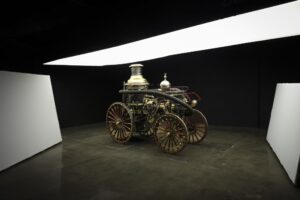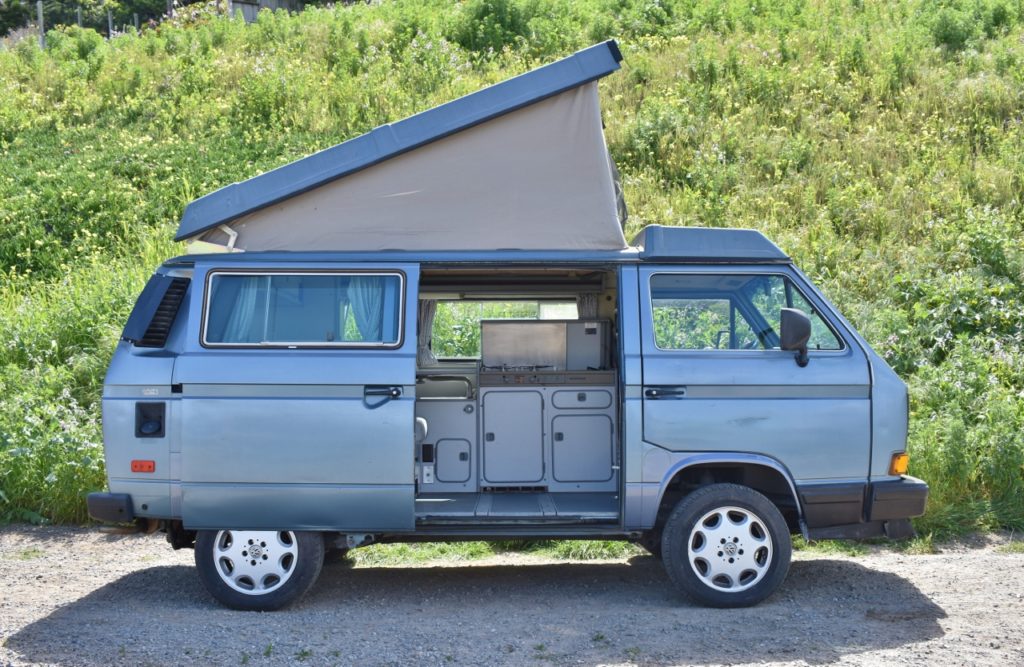
Sold – $23,500 (Plus fees)
Entering into its third generation in 1979, Volkswagen’s cheeky classic, the Vanagon, received many convenience and mechanical advances to prepare it for life in the eighties. As originally designed, a rear-mounted, air-cooled motor initially continued to provide power but in 1983 was supplanted with a water-cooled flat-four engine. Aside from helping to relieve some of the heating and corrosion issues, the new powerplant not only gave owners superior horsepower but also higher fuel mileage. Apart from that improvement, more standard livability enhancements and optional equipment choices became available – especially in 1986. The third generation (T3) retired in America during 1991 and today we have an exceptionally well-kept example of the highest trim-level Volkswagen offered Vanagon in during the last few years.
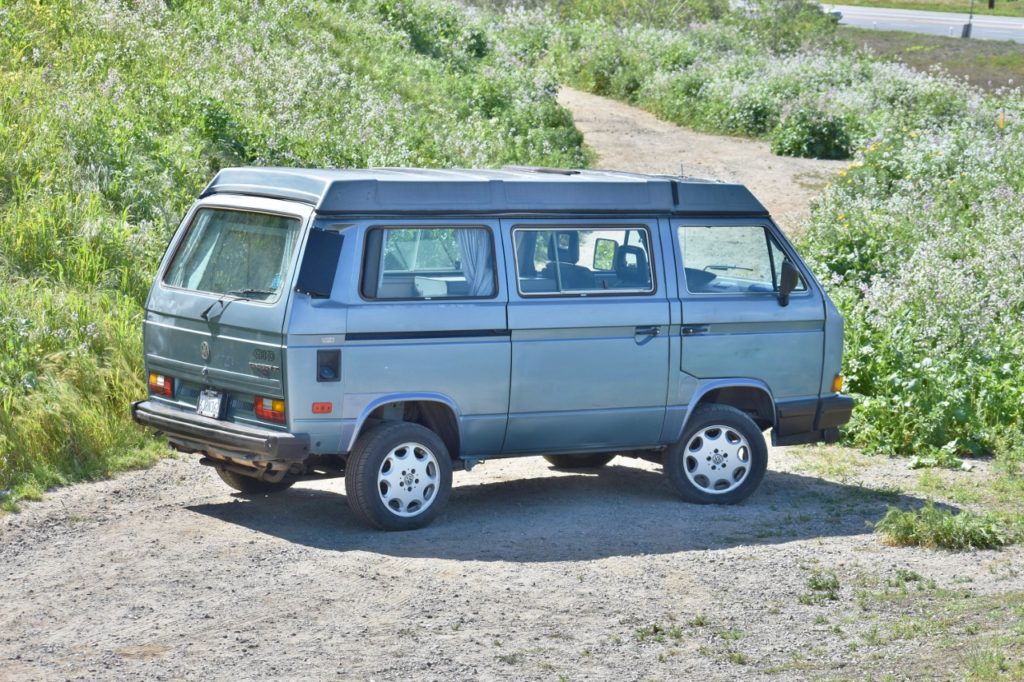
Painted in Dove Blue Metallic (LH5U), this Vanagon Westfalia variation is complete with a pop-up roof sleeping area. The original factory paint has been reapplied by a previous owner, and the current owner states the quality is acceptable. Areas on the trunk and passenger door have lost clearcoat and around the whole van are spots of chipping, fading, and scratching commensurate with use. Aside from the paint, there are visible points of rubber seal bubbling and a panel crease within the sliding door.
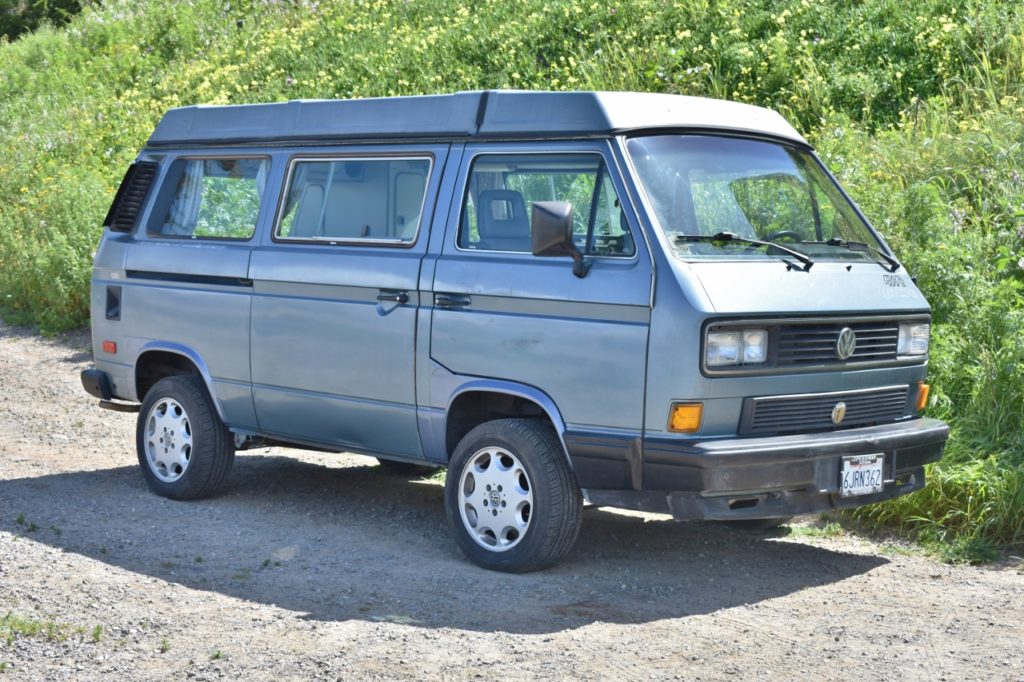
Some of the updates given to the exterior of the Vanagon in 1986 include square headlights and more pronounced rubber bumpers (front and rear). As mentioned, the Westfalia has a variable position rooftop, which when deployed affords passengers a sleeping area made possible by a lightweight panel and fabric. When extended the textile can unzip allowing access to the roof over the cab, and the seller describes some small tears within that ventilation mesh. The Vanagon currently rides on eight-hole 16” wheels from Mercedes-Benz that were purchased by GoWesty in 2008. Each wheel is shod in Kumho Ecsta LX tires.
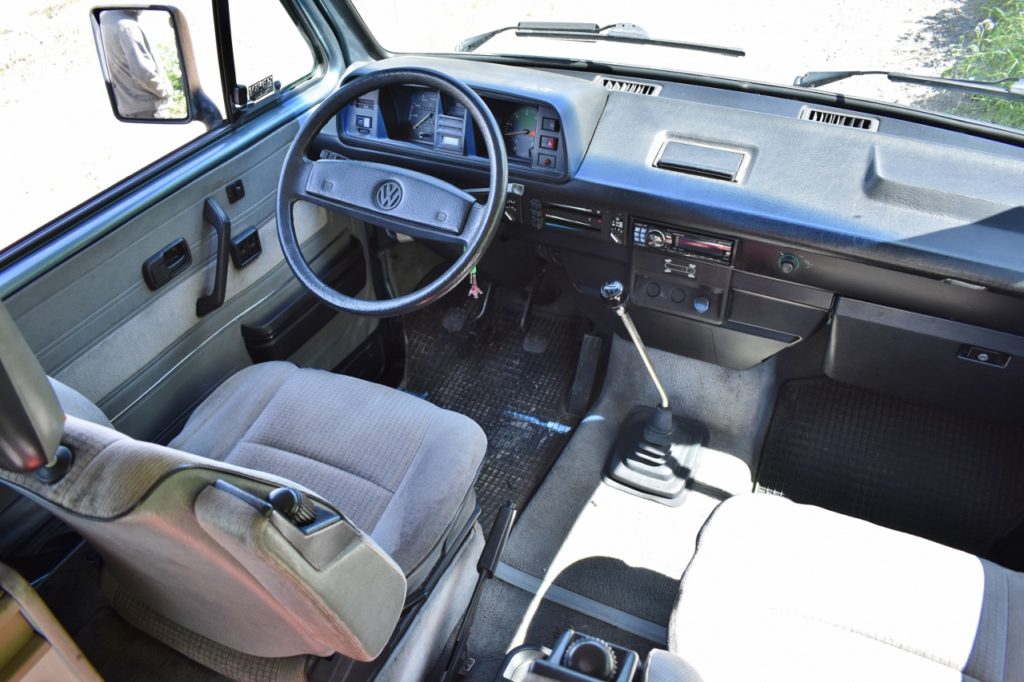
When a Vanagon was selected for Westfalia trim, the was further outfitted in a spartan ‘Weekender’ arrangement or the higher furnished ‘Campermobile’ variation – this is the latter. Campermobiles benefitted from the factory with a kitchenette collection supplying a stainless steel sink (with onboard water supply), a two heater propane stove, and propane-fueled refrigerator. Additionally, the rear bench seat was capable of converting into a bed for two adults, and fabric curtains pull closed to enhance privacy. To stow items, several storage cabinets with doors are placed throughout the rear. The front seats swivel around to function as extra spaces for passengers and dining chairs when the folding tables are attached. Notably absent is the middle bench seat, which the seller says is unavailable.
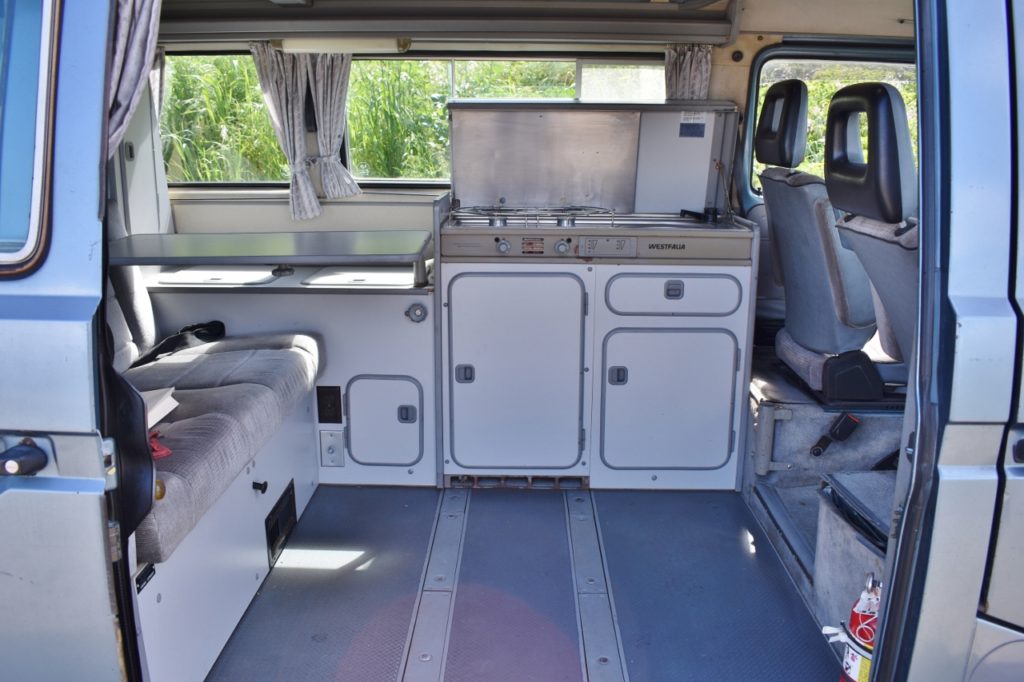
Upfront, the swiveling captain’s chairs are covered in grey fabric (matching the rear bench). Below is seat-color complementary grey carpeting and in the driver and passenger footwells are two black all-weather protective floormats. As for equipment, a black plastic dashboard houses the air conditioning controls, an aftermarket stereo head unit, and illuminated differential lock panel (currently non-functional). Also incorporated into the dash is the factory instrumentation set, which comprises a colored tachometer with a green ‘fuel-conscious’ shift area, water temperature gauge, fuel level meter, 180 km/h speedometer, and digital clock. The padded two-spoke VW-branded steering wheel has been retained alongside the original five-speed gearshift knob.
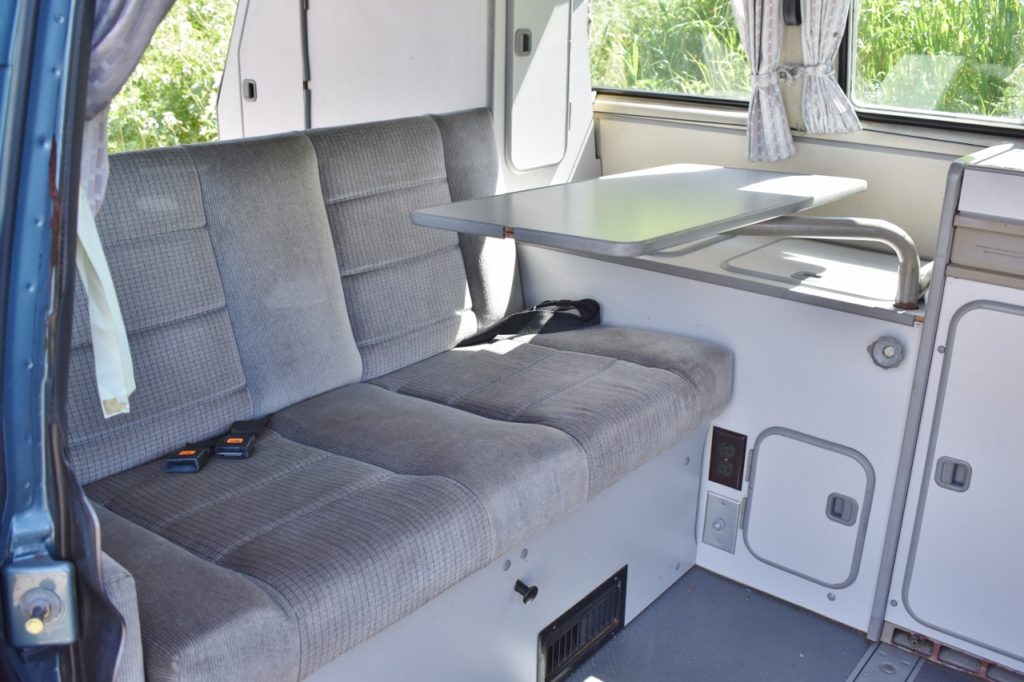
Top-of-the-line not only in terms of trim, but this Vanagon also has an Austrian built and installed all-wheel drive system (Syncro) from the same company who designed Mercedes’ G-Wagen AWD system – Steyr-Puch. At nearly 50/50 weight distribution, Vanagons are well-balanced campers. A five-speed manual transmission is coupled to a 2.1-liter water-cooled flat-four engine that churns out around 95 horsepower. In 2008, the powerplant was rebuilt at 396,000 kilometers, and two years later the central driveshaft was exchanged by GoWesty. Some oxidization is present among chassis components, and one CV joint has a visible tear.
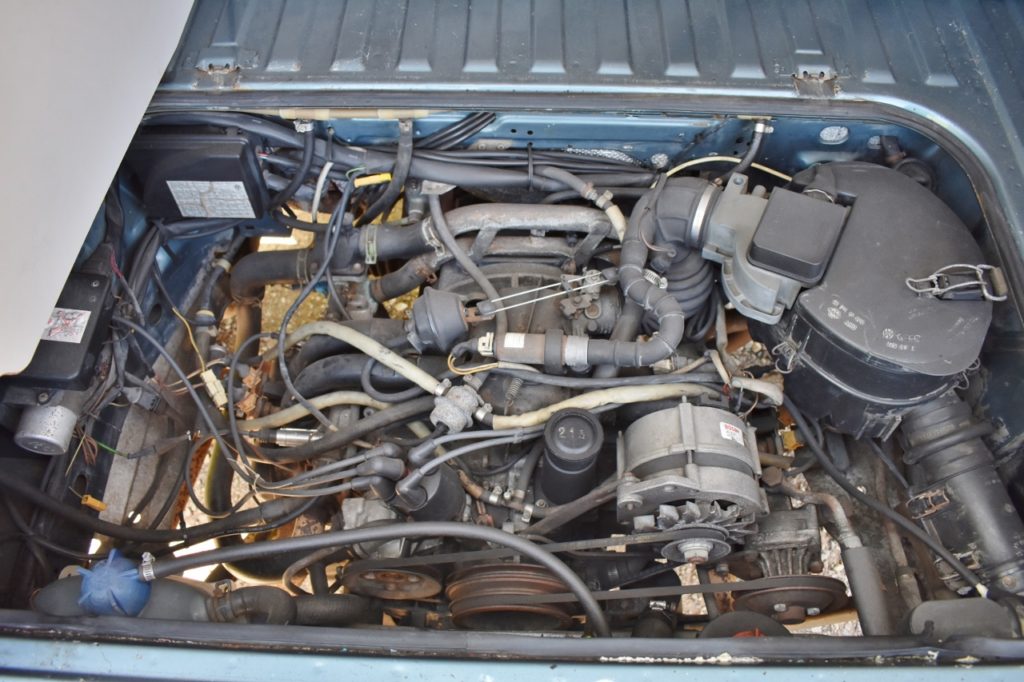
Initially sold in Canada, this Westfalia has resided in Washington, Florida, and California with the original owners. It was purchased in 2018 by the second and current owner. The reported information on the Carfax history shows a Washington arrival in 1990 and a clean run since. However, there is a minor mileage inconsistency in 2017. Along with that documentation is a certified letter from Volkswagen Canada verifying its United States vehicle regulation legality. The factory-issued owner’s manuals, maintenance records, and a floor-mounted fire extinguisher are all provided with the sale and clean California title.



